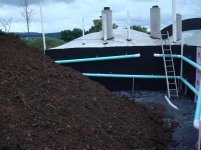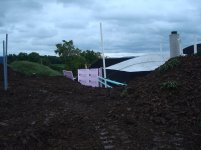patrick_g
Elite Member
Back in 1990 through 1994, I was a Production Engineer for Quintron Corporation in Chantilly Virginia. All we did was design and build flight simulators for DOD. We did P3s, T37, T38, T1A and T400.
The machine I was trained on and was my entire USAF job was old when I got there and about 7-8 years ago I saw the exact model and variant in an air museum in Fayetteville Arkansas. The retired bird col who was the volunteer docent told me they had some engineers look at it and were told it couldn't be fixed. My translation of that is they were digital types and had no clue.
The LInk C-11 was almost all analog computers made with tube type power supplies and servo amps, chock full of shaped card potentiometers, selsyns, autosyns and other variants of synchronous transmitters and receivers, rate servos, position servos and on and on. Interesting technology but not something recent EE grads have much of a clue about. Only a couple years prior to visiting that air museum I had tossed out my personal schematics marked up with colored pencil when in tech school on that model. Bad timing.
I witnessed a de-installation of electronic and computer equipment at Minot AFB. When I first arrived the SAGE (Semi Automatic Ground Environment) system was being de-installed. The system's computers were comprised of a jillion tubes and hefty tube rectifier type power supplies. The SAGE bld was three stories with a full basement and a backup electric generating station. The diesels of the generators were big enough you could climb in a valve and ride up and down the cylinder standing on the piston to inspect for PM. There were huge chiller towers for the A/C system that had to remove the heat of all those tubes. The smaller plenums were big enough for two or three guys to walk abreast with full standing head room.
When I arrived guys were chopping bundles of coax cables into 5 ft lengths to be light enough to carry out to a dumpster to be sold for scrap.
The Minot SAGE facility was deactivated after less than two years of operation, in May 1963, never being operational.but waws used for a Manual Control Center (MCC). The facility was then renamed the PRIDE Building ("Professional Results in Daily Effort") after ADC's and SAC's alternate motto of the 1960s and 1970s, and became a large office building housing many different organizations. The USAF tried to make much of the bld into office spaces but throttling down the A/C was not easy and summers in the SAGE bld were almost indistinguishable from winters outside for the office rats. This was good for the training devices section as all our trainers and sims for the various combat aircrew positions needed a lot of cooling so we were comfortable.
This three story including basement complex was near miss A-bomb proof and had no windows. It was replaced with a system built into a couple semi-trailers (aren't transistors just marvy poo?).
BIG bucks to build and never went operational and de-installed 3 years later.. your Government at work.
Now to some on-topic stuff... I was told that the typical earth sheltered home (cast concrete construction) takes 2-3 or more years to really get rid of all the excess moisture from the concrete and that running a dehumidifier during that time is recommended. What is your take on this considering your 10-15 years newer with your information/involvement?
Pat

